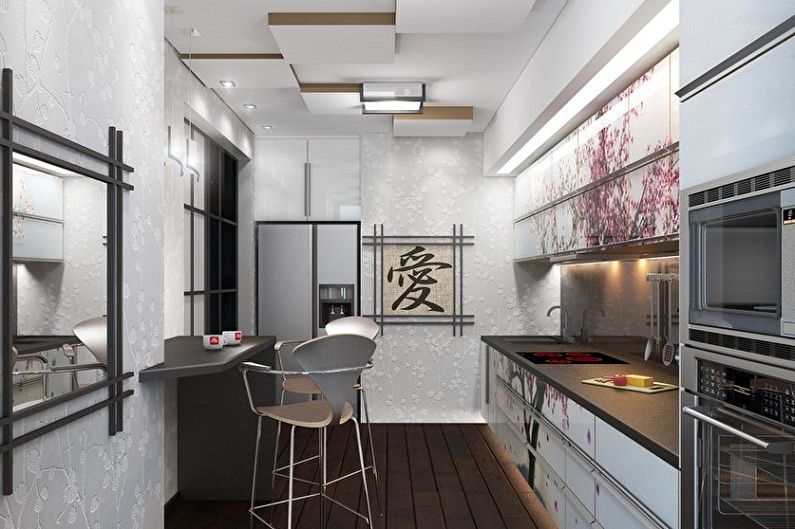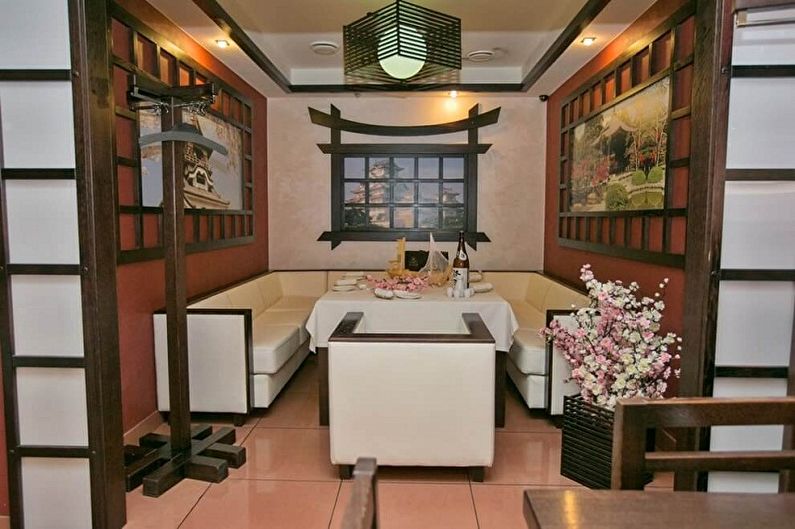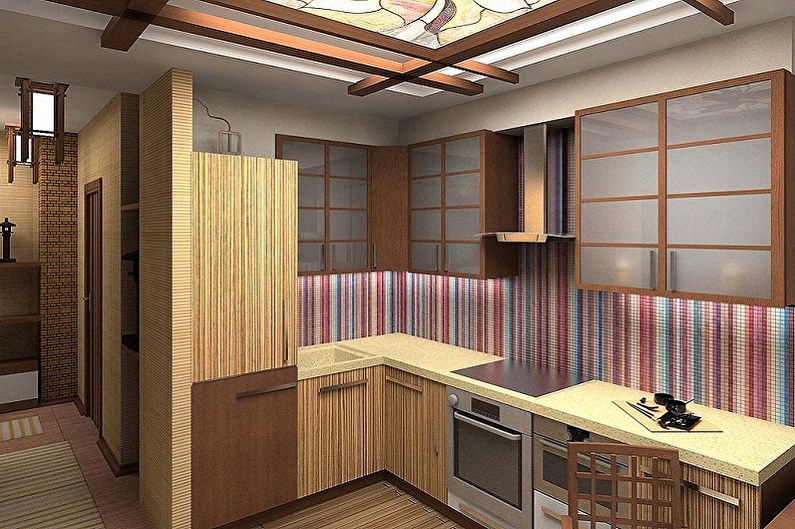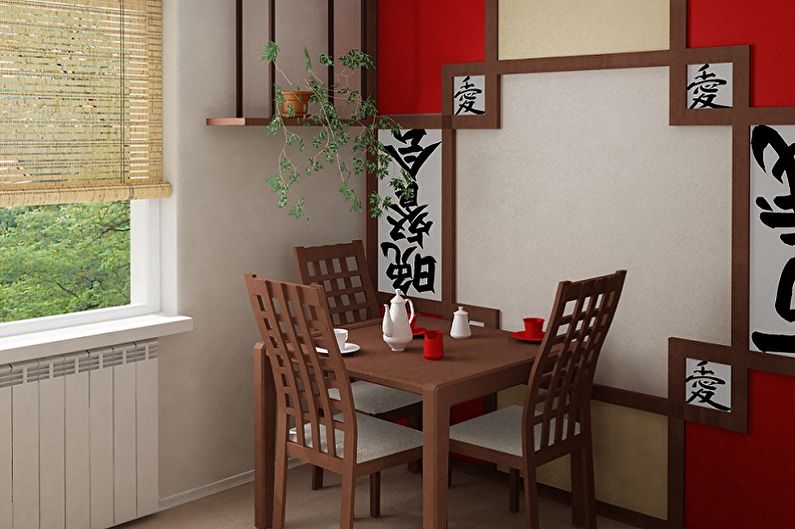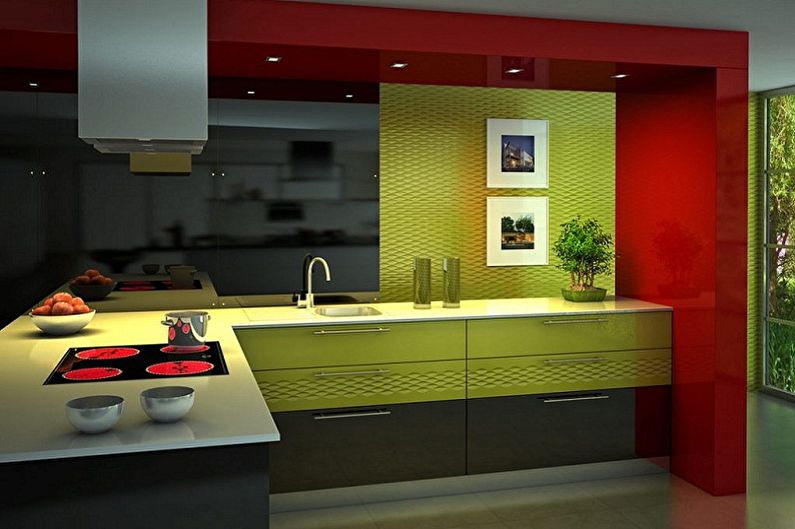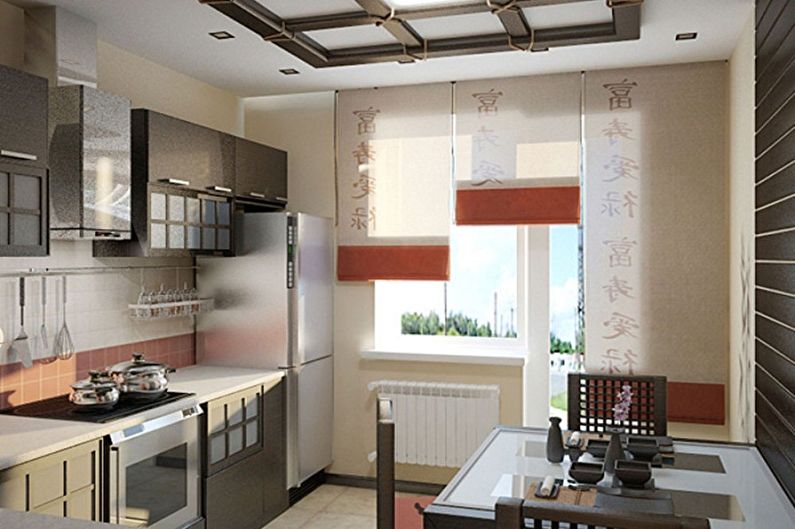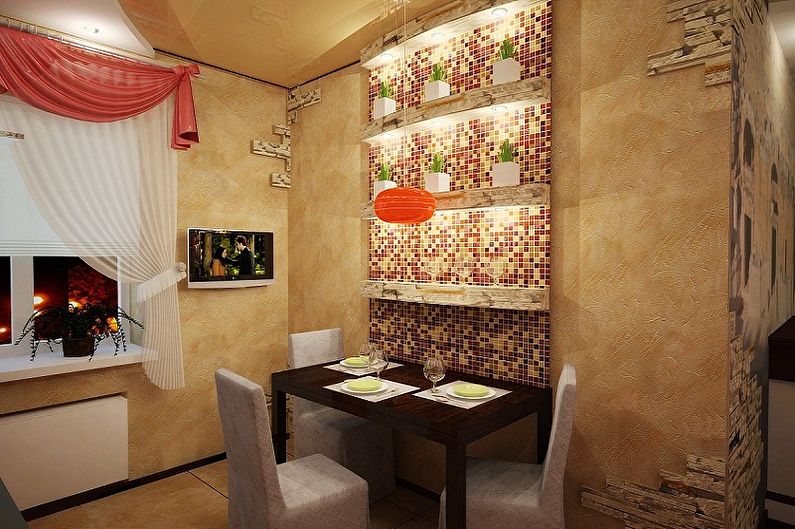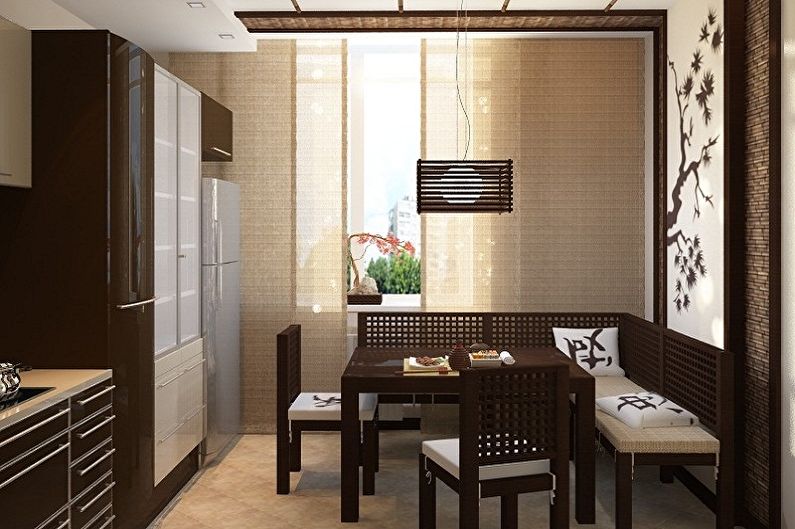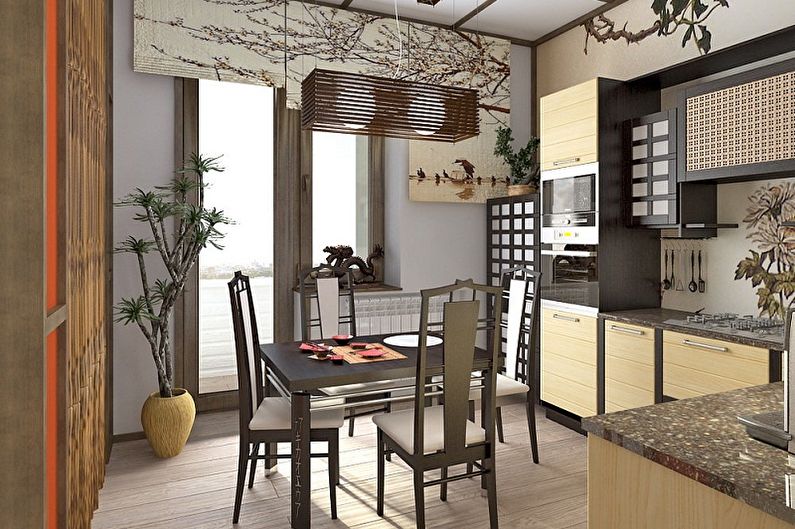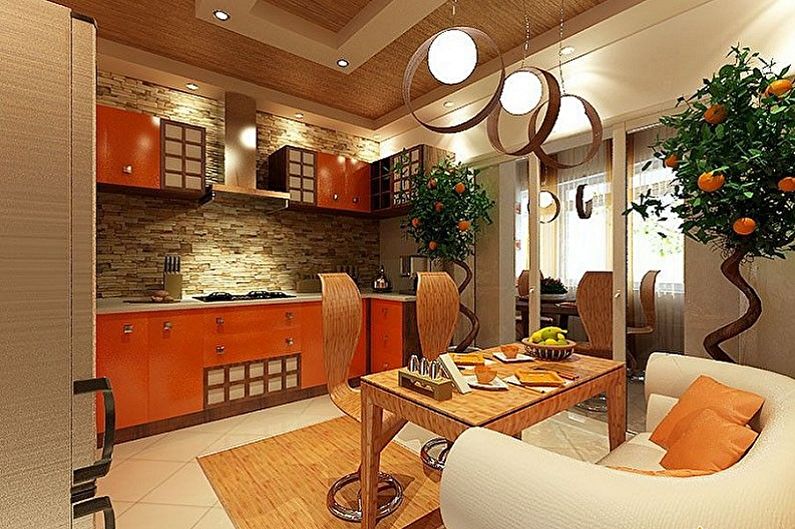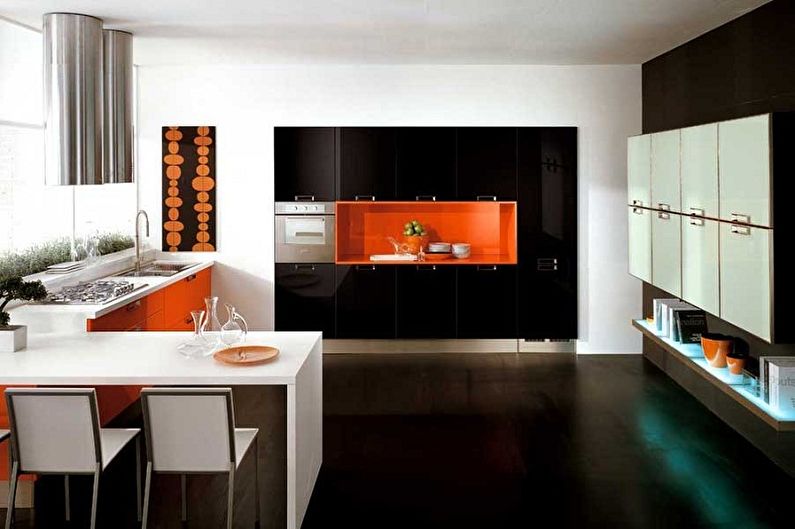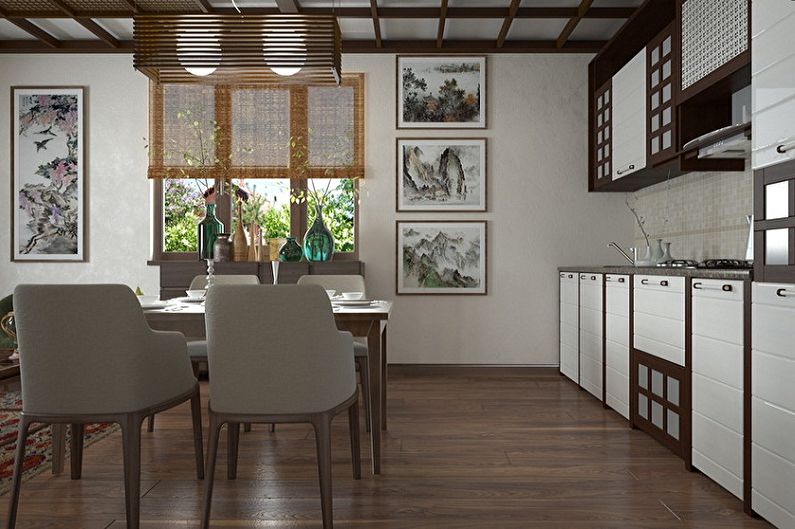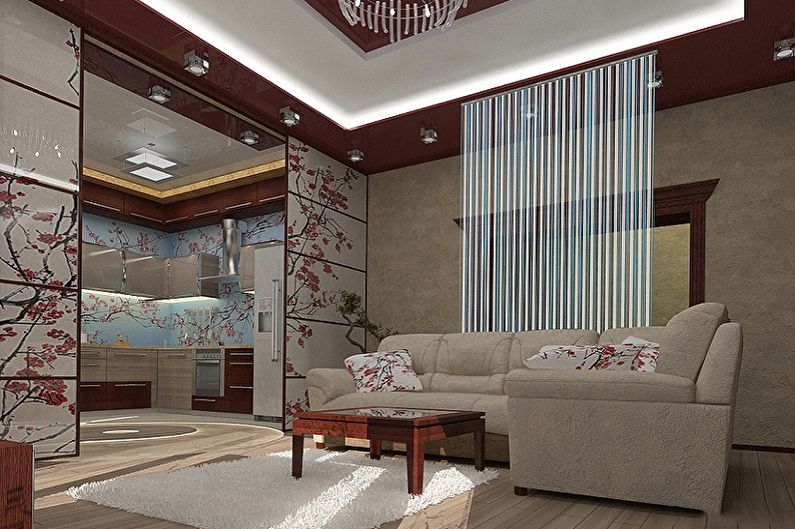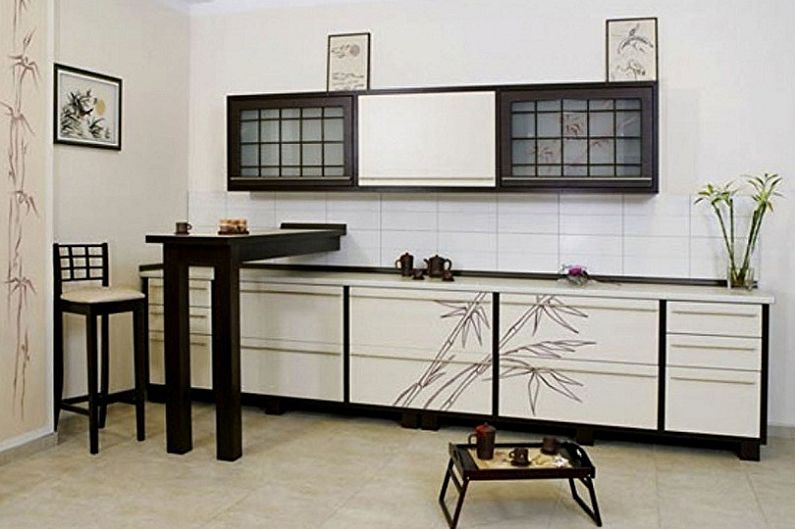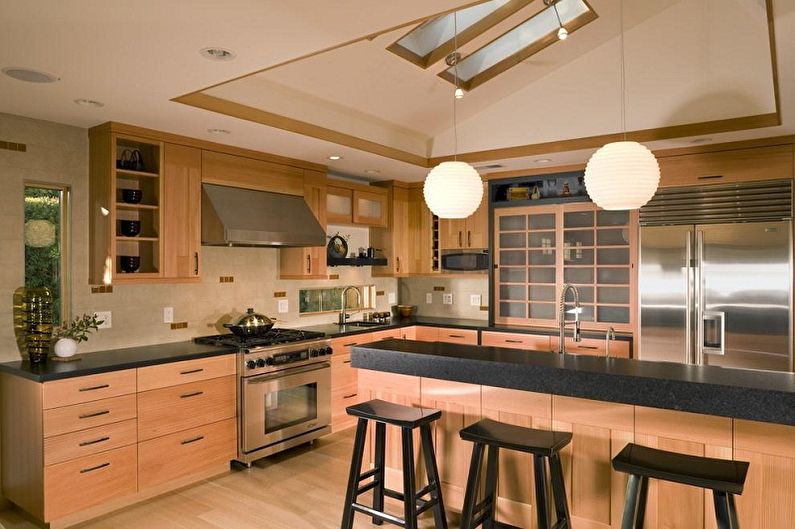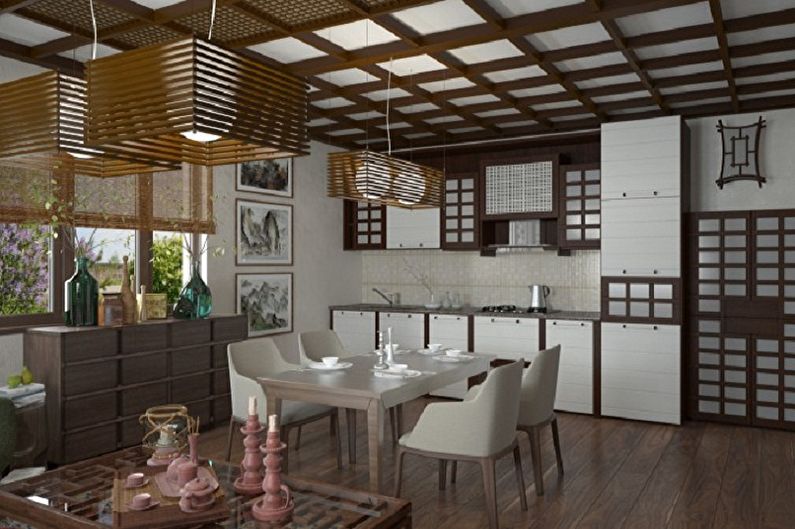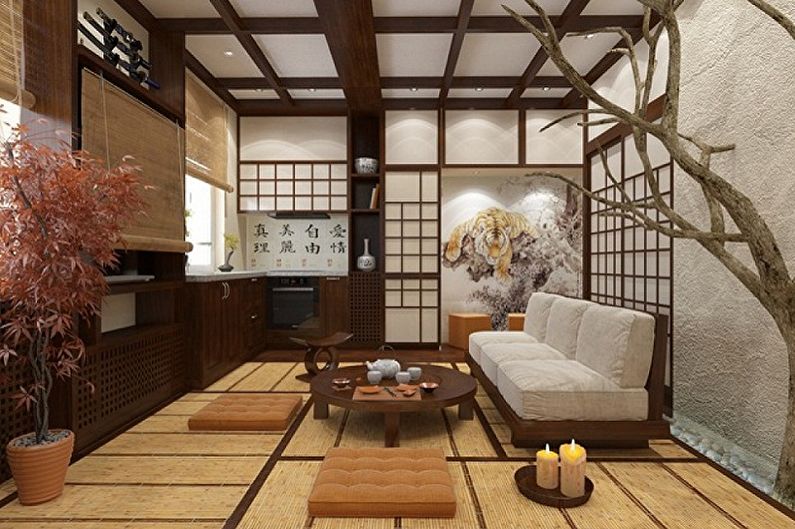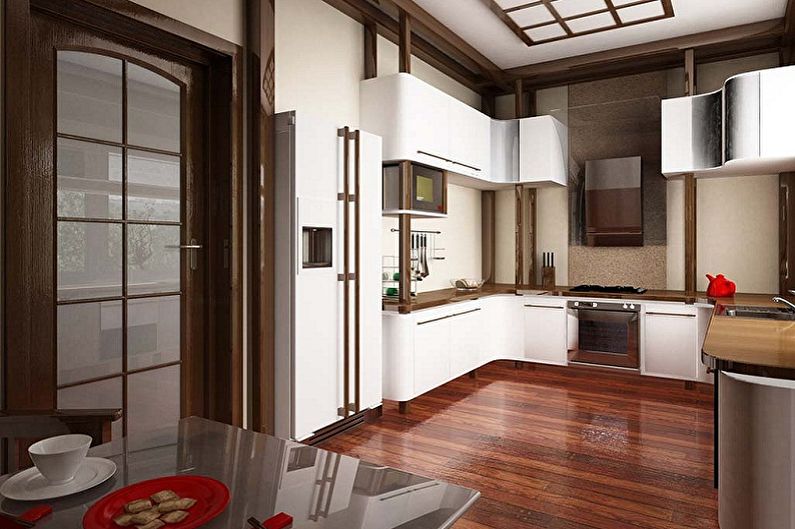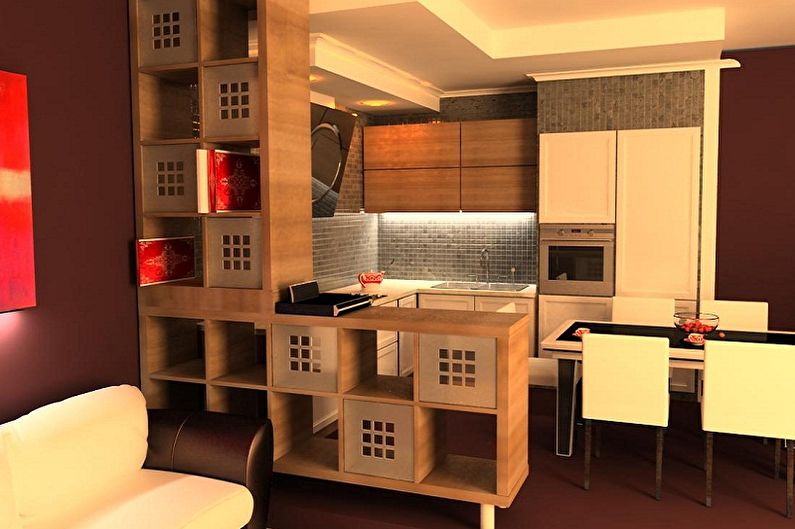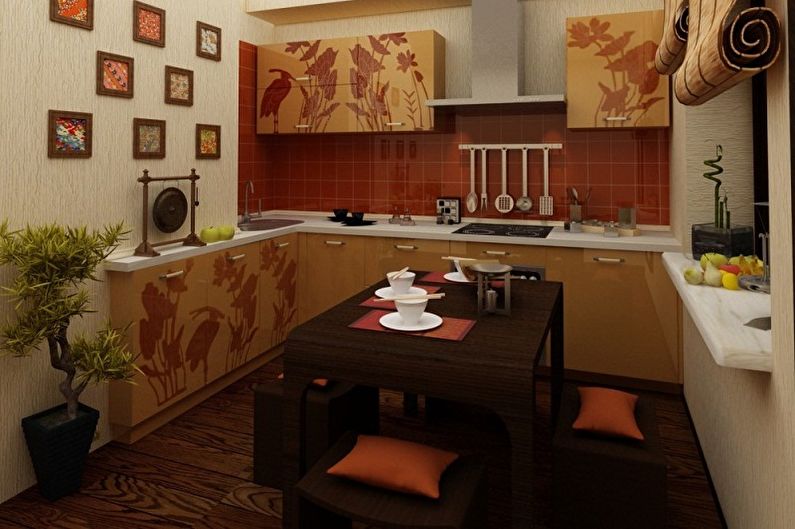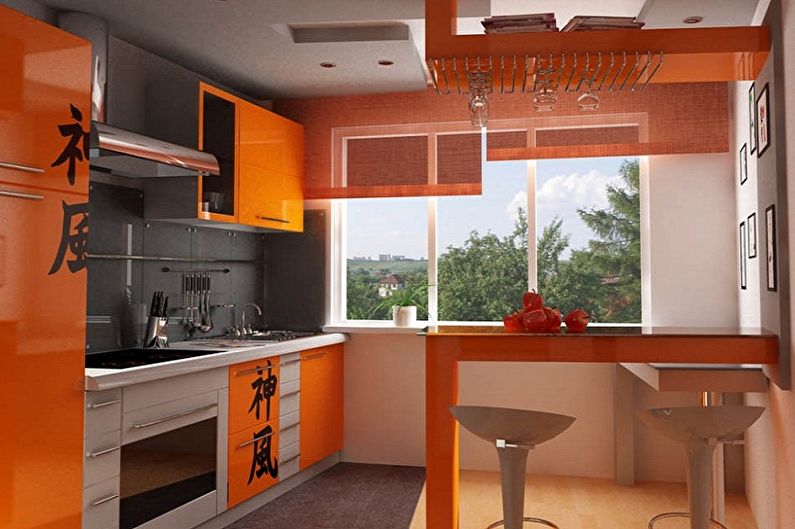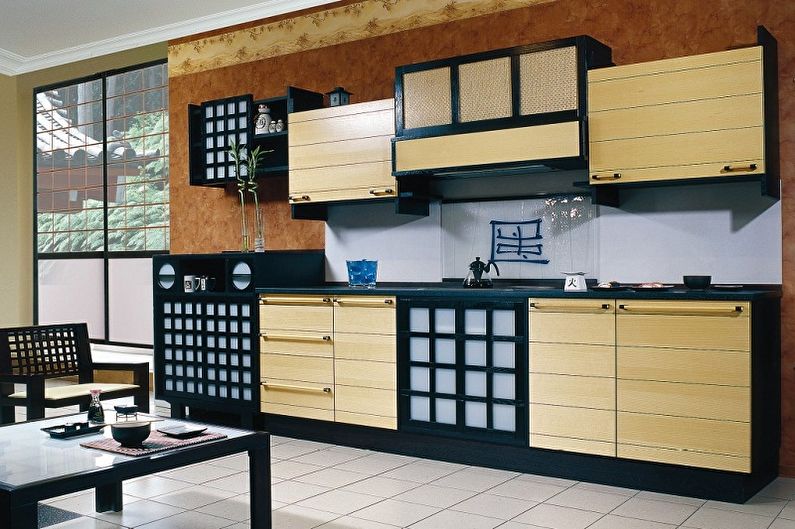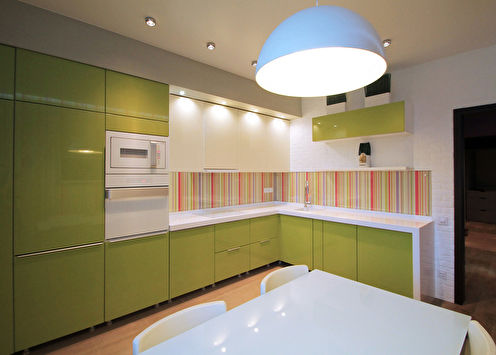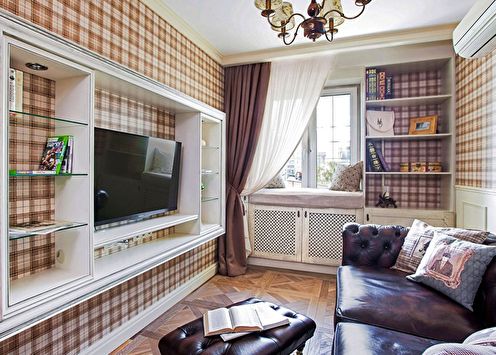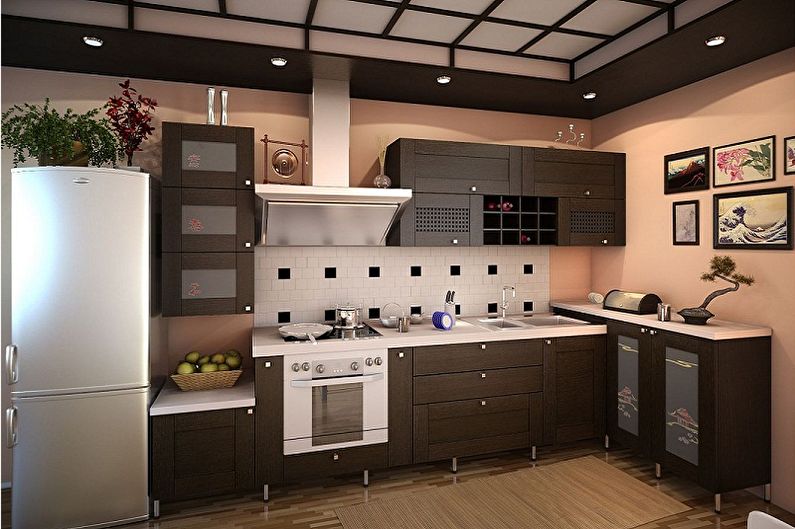
While undertaking the repair of the kitchen, each of us wants to see it as a comfortable, ergonomic space, where it is pleasant and convenient not only to cook food, but also to have a meal, gather in a circle of friends over a cup of tea. If you are not a supporter of the ordinary, we suggest that you consider the option of designing a Japanese-style kitchen that perfectly fits into any size of the room and makes it a special room that you don’t want to leave.
Japanese style features
Residents of the Land of the Rising Sun have always been able to appreciate the beauty and rationalism. Numerous cataclysms forced the Japanese to equip their homes with a predominant share of minimalism, where ergonomic functionality takes precedence over lush decoration, cluttering up the space with many unnecessary things. An important role in the ascetic arrangement of Japanese homes was played by national philosophy, according to which everything that happens in the environment is just vanity, and you need to take care of the inner world.
The main features of interior design can be distinguished such as: the use of natural materials with a natural color palette (wood, stone, bamboo, silk, rice paper), squat furniture of the correct forms, the lack of bright light and decor, as well as replacing the interior walls with original ones.
In modern European interiors, of course, some details are a bit simplified: natural rice paper is replaced by frosted glass, plastic, and MDF is often used instead of wood. Shoji partitions are also found less and less - their installation is applicable for large spaces, in a small kitchen, they are reflected in the decoration of the facades of the headsets, decor. Despite this, the Japanese style is recognized as one of the most aesthetic, combining restraint, simplicity and, at the same time, the invariance of the traditions of ancient culture.
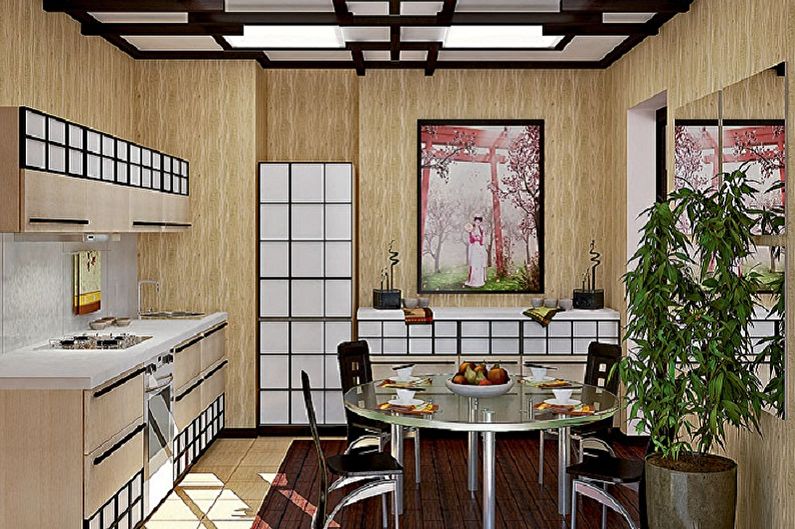
Color schemes
The color palette of the Japanese-style interior was greatly influenced by the desire of people to live in harmony with nature, so the main tones in the kitchen will be beige, brown, green, gray, cherry and black. There are amber inclusions comparable to the color of honey, as well as shades of water - blue and blue. The white palette, unacceptable for Japanese interiors, is replaced with cream, milk shades. The design uses no more than three tones, among which light is the prerogative. Thanks to this color scheme, the Japanese style is perfect for any room, despite their size and location relative to the cardinal points.
Japanese style beige cuisine
Beige is a basic neutral shade that can be combined with many colors. It has a calm energy and is considered close to the color of a person’s skin, therefore it is not able to concentrate on itself. In the interior of the kitchen, it may be present in large quantities in the form of decoration materials or facades of the headset. Best of all, a beige palette is combined with a close one - brown, but the presence of contrasting tones is not excluded.
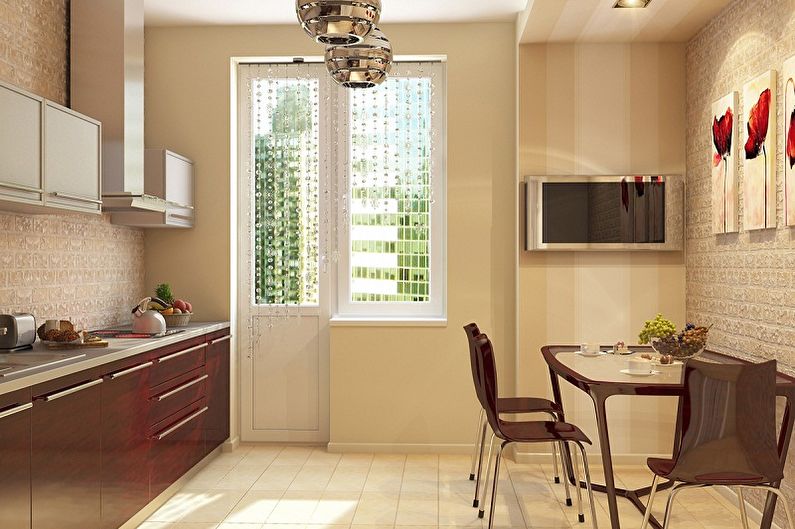
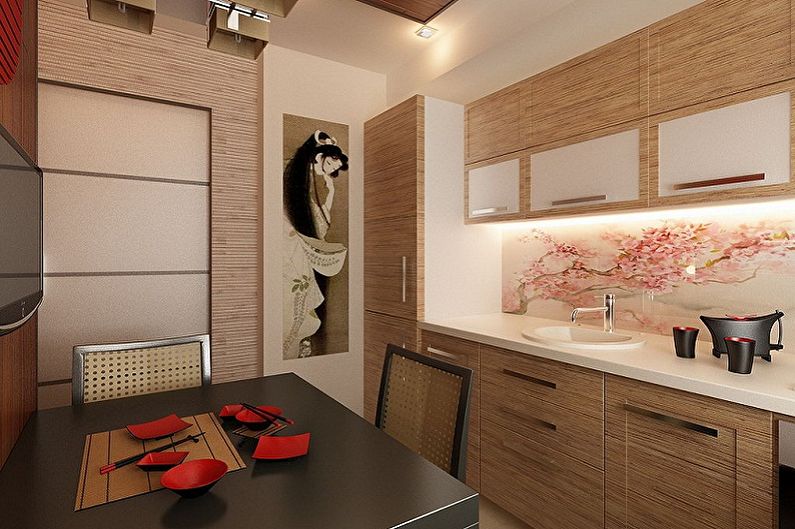
Japanese style red cuisine
The red color is associated among the Japanese with strength and masculinity. Even in the Middle Ages, people honored the element of fire, giving warmth and life, considering it a symbol of peace, prosperity of the family. In the interior, the red palette can significantly revitalize the situation, highlight the most important areas. The red palette with wenge and ivory tones will perfectly match.
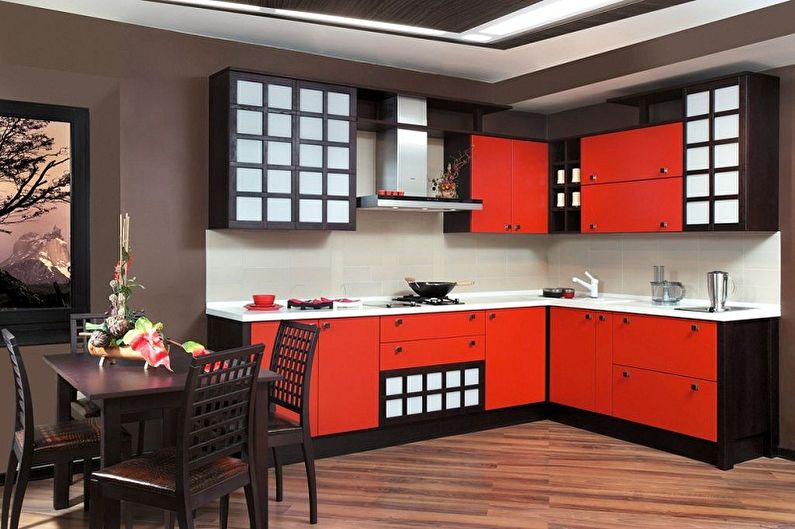
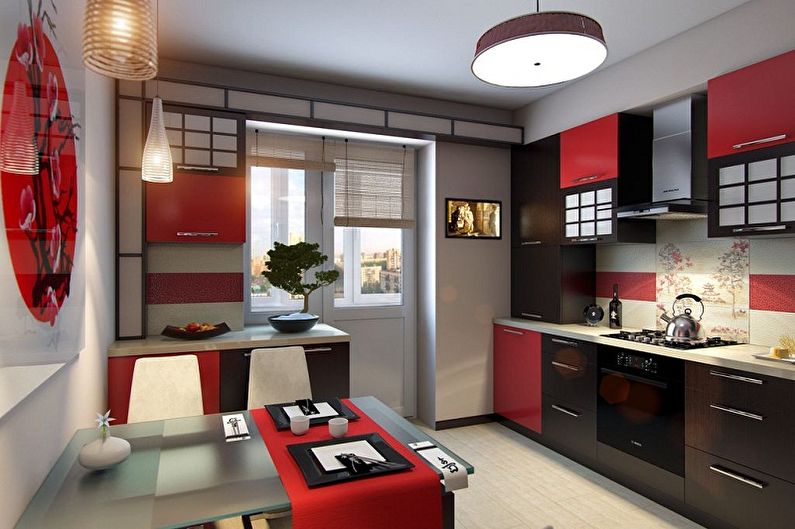
Japanese style brown kitchen
The color creates stunning contrasts in the relaxed atmosphere of Japanese cuisine.It causes associations with reliability, warmth of the massif of wood, makes you concentrate in making the right decisions. However, an overabundance of it in the interior can cause depression and disappointment, so it is important to choose the right shade and companions, among which the most successful will be golden, sand, green tones.
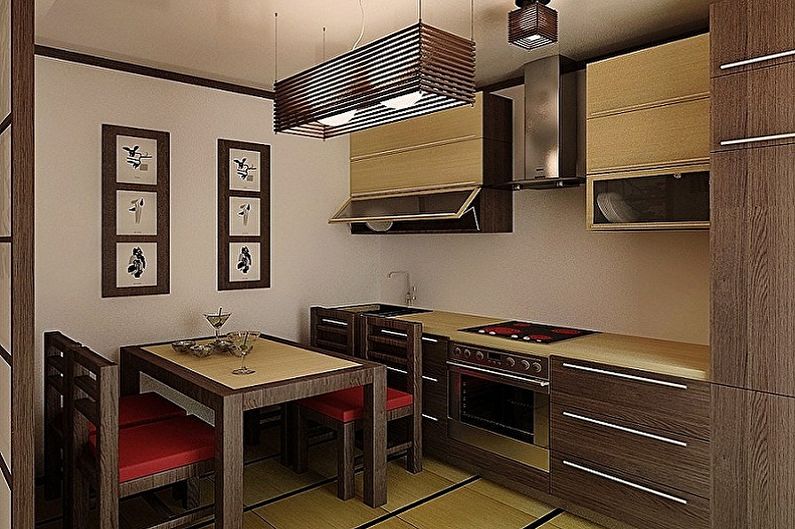

Japanese-style green cuisine
The olive palette in the Japanese interior looks quite organic. Color is associated with nature, has a huge positive effect on the emotional state of a person, calms, helps to escape from pressing problems. But you need to use it in the interior in a dosed manner so as not to cause a passive state. The olive palette will look even more expressive surrounded by woody textures close to it, and the main background may be milk or light gray.
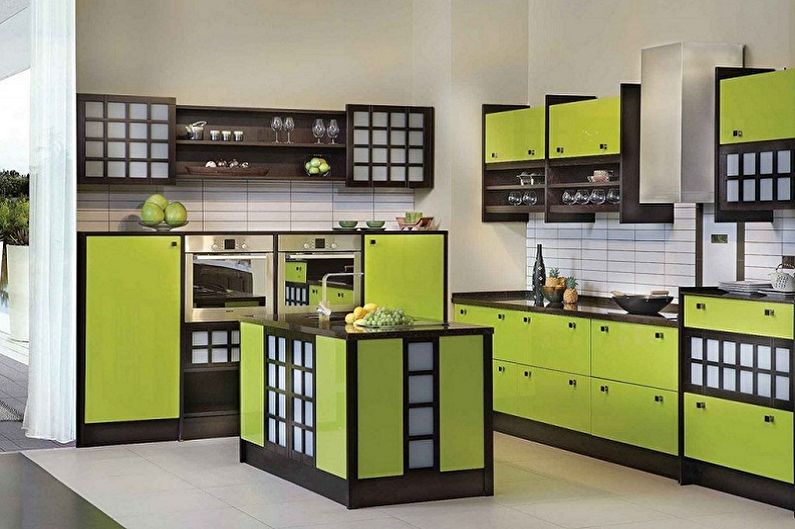
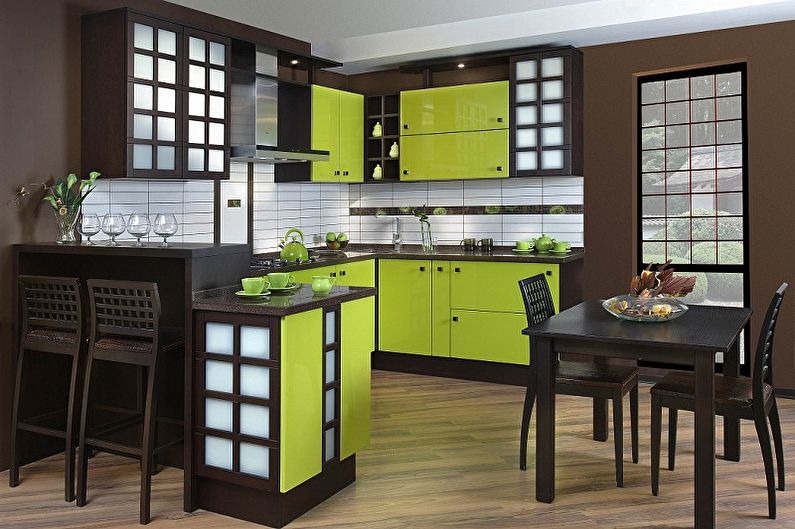
Japanese-style black cuisine
The grayish palette among the Japanese is considered a symbol of nobility and wisdom. Against her background, any colors will expressively and elegantly sparkle. Since the Japanese are not inclined to decorate the wall decoration in dark colors, black color will be present in the facades of the headset, and red, pearl, olive tones will become its best allies. It is also used for drawing drawings, hieroglyphs.
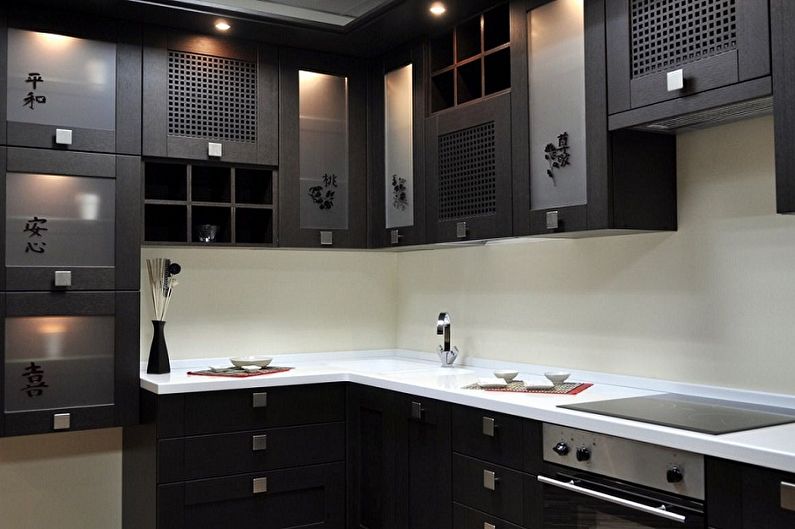
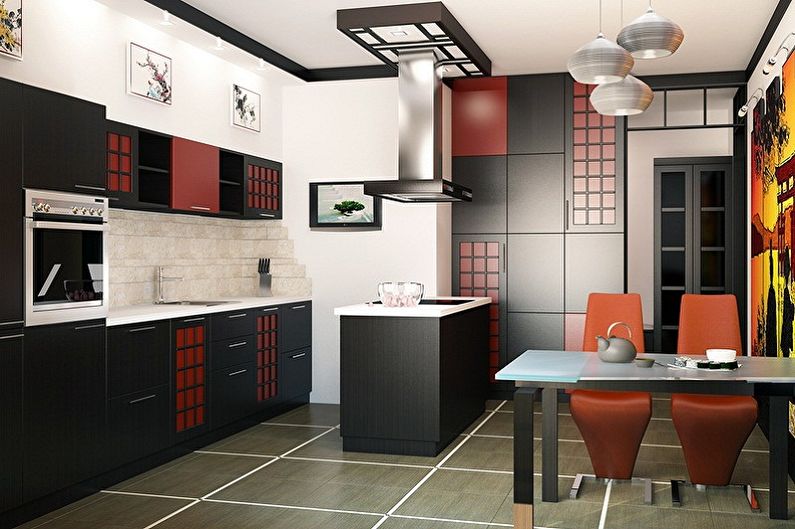
Finishing and materials
As we said earlier, in the design of the kitchen in the Japanese style, natural materials are preferred. However, it is worth considering the fact that, unlike the original Japanese buildings with an almost complete absence of partitions, today's interiors are endowed with modest enclosed areas, and not every finishing material can cope with conditions of high humidity, temperature extremes. Therefore, we pay attention to the most moisture-resistant, easily washable finishing methods.
Floor
The traditional decoration material for the Japanese-style kitchen is a wooden board. Nowadays, this type of decoration is relevant for private homes, and in the conditions of apartments it is replaced with linoleum, parquet board or laminate. You can choose floor porcelain tiles, including imitating wood structure or stone. A great addition will be the tatami mat near the work or dining area.
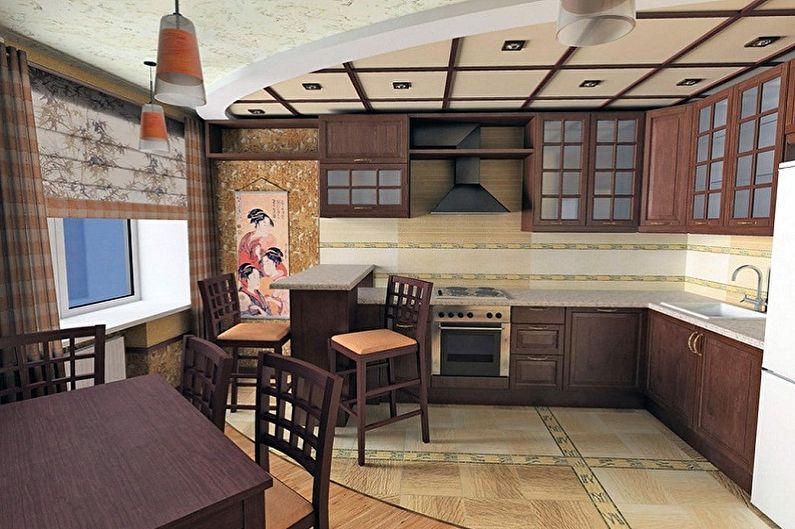
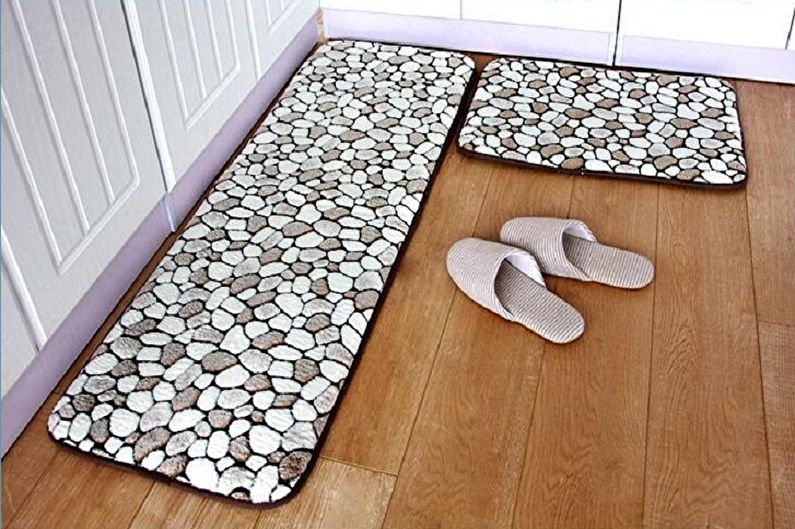
Walls
To decorate the walls of the kitchen in the Japanese style, you can choose decorative plaster or plain wallpaper in a neutral color. To determine the accent areas, wooden panels are used, as well as plastic ones imitating wood, bamboo, and thematic murals. One wall can be designed under the shoji partition by installing overhead PVC panels in Japanese design.
Particular attention should be paid to an apron, which often becomes the main decorative element - it can be decorated with stone mosaics, artificial stone or skinned with images on Japanese themes.

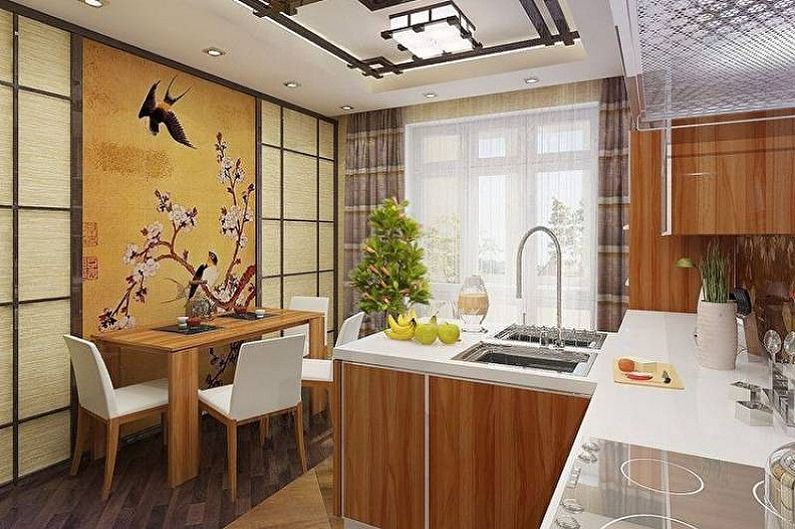
Ceiling
The easiest option for decorating the ceiling surface is painting or whitewashing. But, if you want to maximize the design of your kitchen to the Japanese identity, and allows the height of the ceilings, you can build a more complex structure. To do this, the entire ceiling area is divided into squares, and wooden beams are attached. The inner part can be painted or decorated with a matte, fabric stretch fabric, and the beams must be left in kind.
Armstrong ceiling system looks amazingly beautiful. To build it, it is necessary to attach longitudinal and transverse profiles to the draft ceiling, dividing the area into squares. Subsequently, the trims can be painted with dark paint or glued with a self-adhesive film under a tree. Then, fixtures are installed in the cells obtained and closed with plastic plates, which can also be decorated with paper, cloth or selected images in muted colors on a Japanese theme.

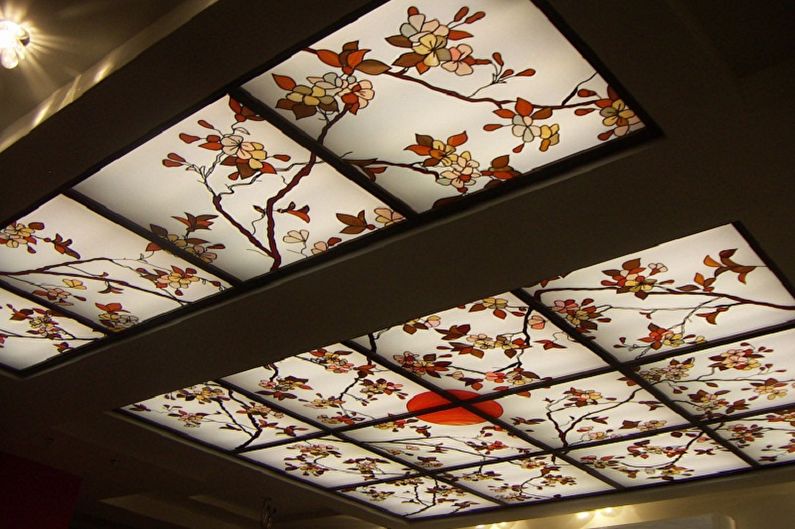
Japanese style kitchen furniture
In ancient Japanese houses, it was customary to install low furniture, use rugs and squat tables for the equipment of the dining area. Of course, for a European citizen, such furniture will cause a lot of inconvenience, and the Japanese themselves no longer adhere to such traditions. Therefore, in order to bring the situation closer to the Japanese one, we choose furniture from unpainted wood, of the correct strict form.
It is better to hide household appliances, including a refrigerator, in the bowels of the headset. The dining table is often equipped very thoroughly, has a stone or wooden tabletop. It is better to choose lockers narrower and lighter, with small handles or without them at all. Frosted glass inserts with a crate imitating shoji will look beautiful.
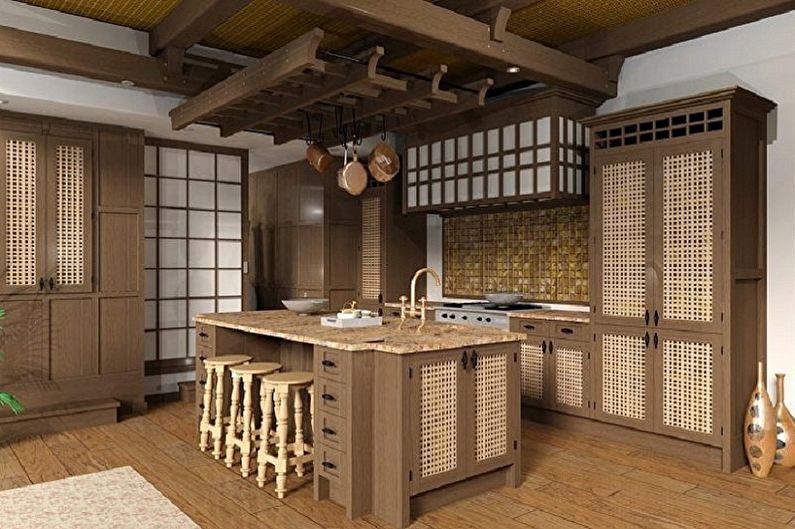
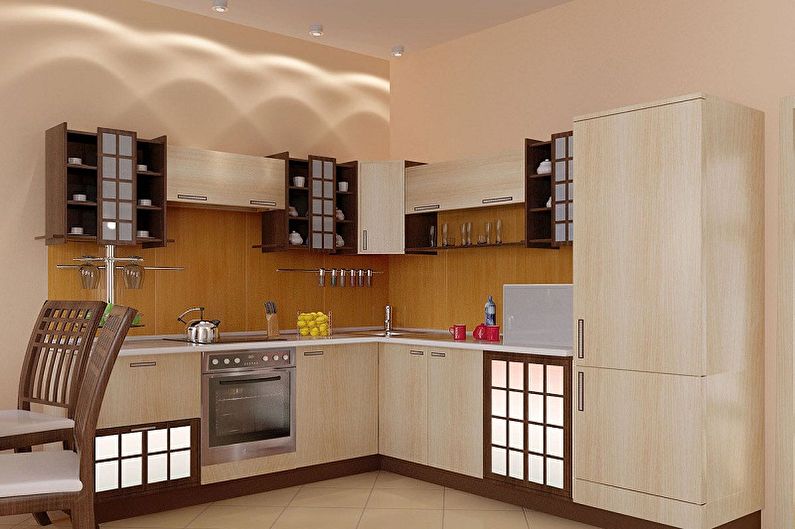
Lighting and decor
In the Japanese interior, scattered lighting is preferred, so the interior lighting of the ceiling in this case will be a very profitable solution. In addition to it, you can install central hanging chandeliers, organize furniture lighting, place spots along the perimeter of the kitchen. Lamps with shades made of woven bamboo, rice paper, straw look beautiful. Since the Japanese honor the correct geometric shapes, clear square, rectangular, or spherical contours are characteristic of lighting fixtures.
Although the Japanese style rejects lush decor, it is nevertheless necessary for the room to acquire a thematic design that does not seem boring and deserted. To do this, use details such as wall scrolls with wise quotes, murals with images on Japanese themes, prints. The decoration will be ceramic and porcelain figurines, vases, which are installed in narrow niches. To do this, it is not necessary to make a recess in the wall - just leave one of the cabinets in the kitchen without a door. Get authentic dishes: tea set, sushi set, dishes for fruits and sweets. Live flowerpots that are associated with naturalness by the Japanese, especially the traditional for culture bonsai tree, will harmoniously look in the interior.
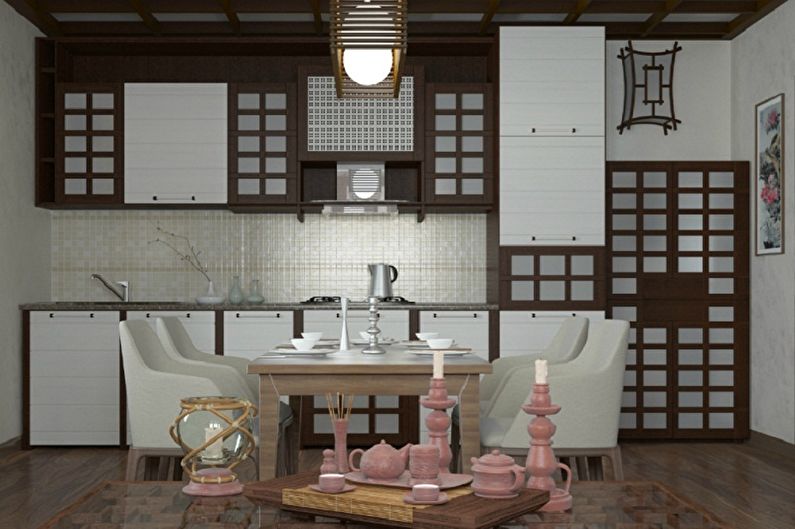
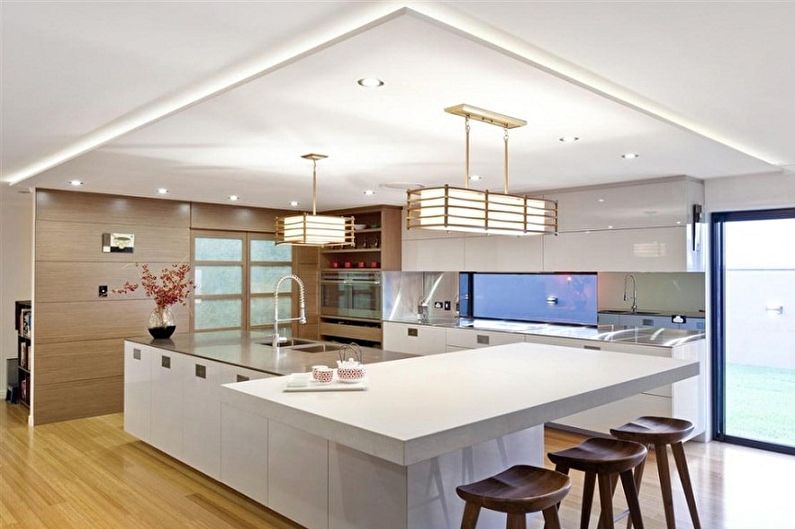
Japanese style small kitchen
The principles of Japanese interiors are ideal for small spaces. It uses exclusively light finishing materials. It’s not worth it to build complex structures on the ceiling that “steal” part of the vertical space - it’s easier to do with painting or, if you really want something special, to build plasterboard decorations.
The furniture set should be lightweight - have open shelves or imitation of Japanese partitions in the facades, which give a certain weightlessness. The principles of lighting design remain unchanged - there should be a lot of dim light, so you should install both general ceiling lights and local, highlighting important areas. Flowerpots, wall paintings, photo wallpapers with thematic images, dishes will become decor for a small Japanese-style kitchen.

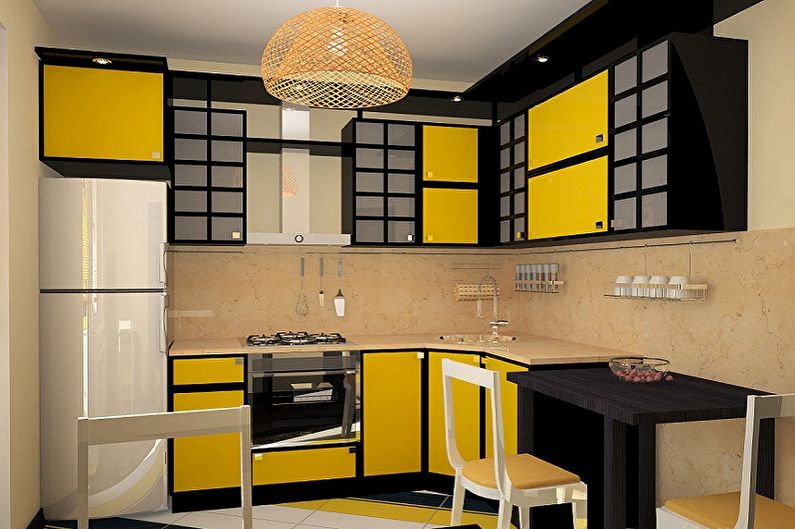
Japanese-style kitchen interior design - photo
The peculiar aesthetics of the style does not cease to amaze with the combination of minimalistic notes and the magnificence of natural motifs with elements of the originality of the Land of the Rising Sun. Take a look at the numerous examples of Japanese-style cuisine, placed on the photo in our gallery, and feel free to choose the option you like. Enjoy watching!
